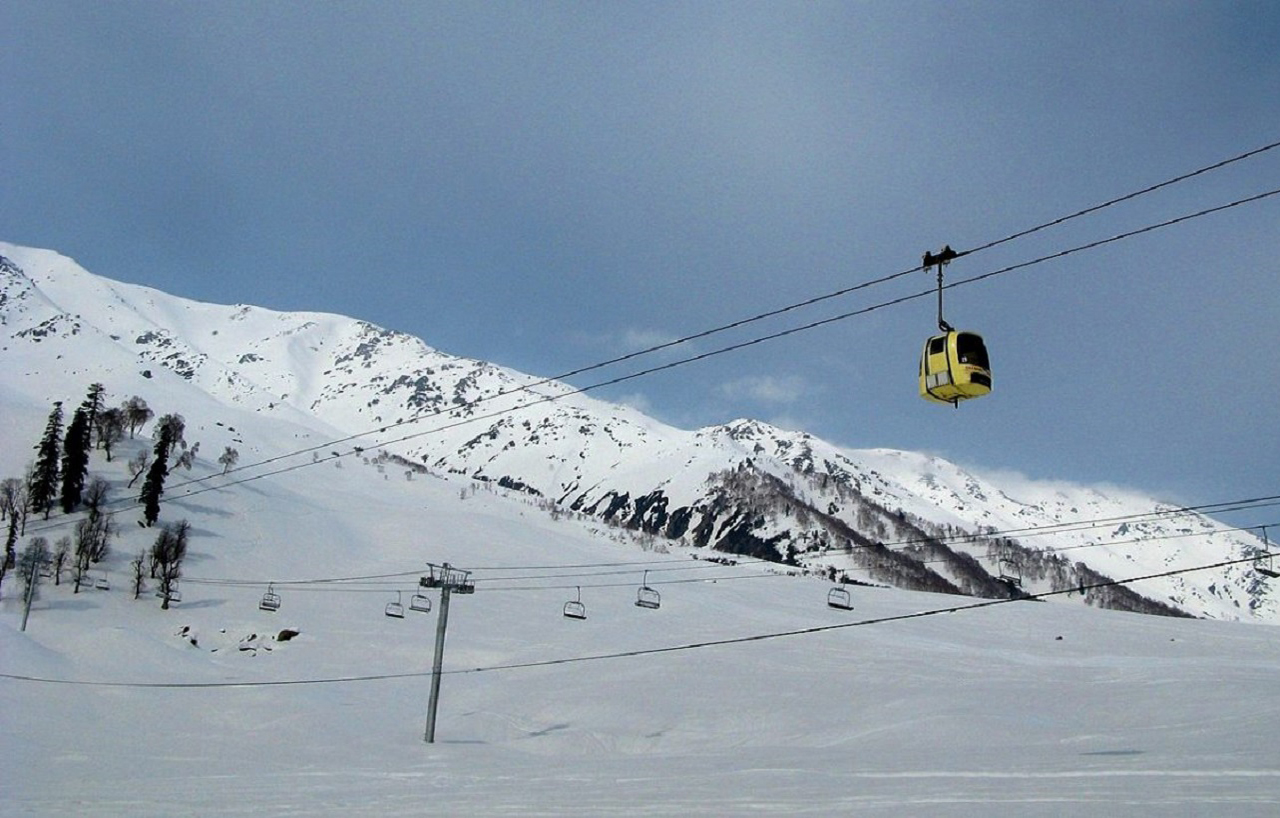The move by the central government to scrap Article 370 and the consequent lockdown and communication blackout (the internet shutdown in Kashmir was the longest ever in any democracy), crippled the economy in Kashmir. The recent report by the Jammu and Kashmir Coalition of Civil Society (JKCCC) said that “the ongoing internet siege enacts a digital apartheid, a form of systematic and pervasive discriminatory treatment and collective punishment”. The report also put the losses suffered during the first five months after the August 5, 2019 shutdown at Rs 178.78 billion. More than 500,000 people also lost their jobs, writes Younis Ahmad.
Chairs laid in order outside dhabas and restaurants in Gulmarg are empty. Horsemen look on hopelessly while their horses graze down the slope near the bus stand, where a few private and passenger vehicles are parked. Barring a few tourists, the world famous tourist destination located 56 km north of Srinagar is but deserted.
“Our livelihood took a hit on August 5 last year, and then COVID-19 made it even worse,” says Jeelani, a tourist guide in Gulmarg. “Everyone from a guide to an ATV (all-terrain vehicle) owner to sledge man to a cab driver has been affected by the absence of tourists. The same holds true even today. There is no way to earn,” he adds. Jeelani also says that the Government gave some compensation to the licensed workers including guides, horsemen and others but the amount paid was too little to get by. “Many have been left out and still await the government compensation,” he tells me.
Abdul Hameed runs a dhaba with another person at Gulmarg’s bus stand. He only resumed his work a week before and his last day earning in all was Rs 60. “Whatever local tourists come, they don’t stop here to eat as they bring their own food. On the other hand, inflation has touched new heights. A mere kilo of potatoes costs Rs 60 here,” says Hameed. Prior to the lockdown imposed due to COVID-19 pandemic, he visited his dhaba once only to find all the food items except rice stolen by monkeys, which had come from the forest and barged in through a gap at the top of the shutter. “I am yet to recover from that loss, add to that the monstrous electricity bill I have to pay every month,” said Hameed.
Another dhaba owner, Abdul Ahad, adjacent to Hameed’s has a similar story to tell. “We have cooked different dishes, but nobody comes. The food will eventually have to be thrown away. Yesterday, I made only Rs 30,” he tells GroundXero. “We can’t do anything. Some of us now can’t even afford a proper meal,” says the old Adul Ahad.
GroundXero also spoke to the office of the Jammu and Kashmir State Cable Car Corporation that operates Gulmarg Gondola, one of the highest cable car projects in the world that ferries people to a height of about 13,800 feet above sea level. It is one of the main attractions in Gulmarg. The data provided by the office shows an estimated Rs 40 crore loss of revenue since August 5, 2019 till August 2020. In the two months, June and July, before the abrogation of Article 370, Gondola ferried 45176 and 31577 passengers respectively. And when the service was restored in October, it ferried 1418 passengers in the same month and 2333 in November. The last day the Gondola was operated prior to the imposition of lockdown due to COVID-19 pandemic was March 20 and the number of tourists ferried was only 26.
The officials at the office say that the possible date of restarting the Gondola has not yet been decided. “We are awaiting the government’s decision,” says an employee at the office in Gulmarg.
The move by the central government to scrap Article 370 and the consequent lockdown and communication blackout (the internet shutdown in Kashmir was the longest ever in any democracy), crippled the economy in Kashmir. The recent report by the Jammu and Kashmir Coalition of Civil Society (JKCCC) said that “the ongoing internet siege enacts a digital apartheid, a form of systematic and pervasive discriminatory treatment and collective punishment”. The report also put the losses suffered during the first five months after the August 5 shutdown at Rs 178.78 billion. More than 500,000 people also lost their jobs.
Interestingly, on September 14, Jammu and Kashmir lieutenant governor Manoj Sinha said that a ‘never-received-before package which includes everybody, including the business community’ was in the offing for the Union Territory. Today, almost a week later, while addressing a press conference he announced that the centre has agreed to Rs 1350 crore economic package under Atmanirbhar Bharat Abhiyan. It remains to be seen whether or not the benefits of such a package will reach a common, distraught Kashmiri who is struggling to make ends meet in the post-August 5 and pandemic-stricken scenario.
- Younis Ahmad is a journalist and writer based in Kashmir.
Also read :
A Kashmiri family’s battle with psychiatric illnesses and how a woman is making it win
Too much to happen in a year: Kashmir since August 5, 2019
Raging Fire: An Everyday Reality in Kashmir

